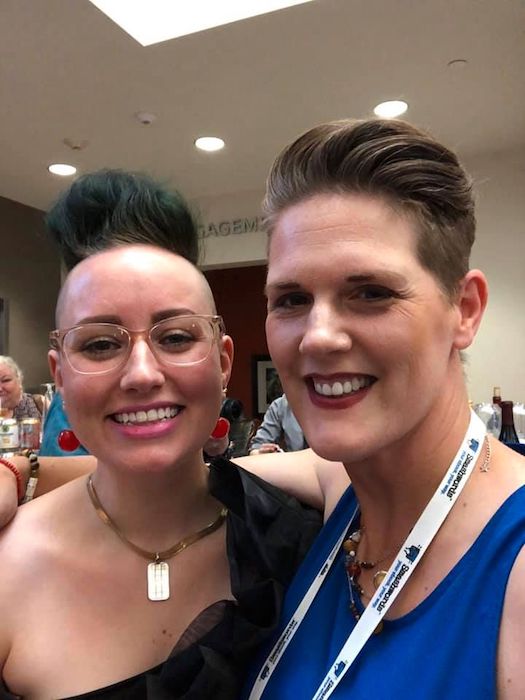by Bonnie Jean Feldkamp, RCN
As a teenager, I frequently walked to St. Stephen Cemetery after school to sit by my mom’s headstone. She died in a car accident when I was seven and I didn’t fully understand it enough to confront what that meant for me until adolescence.
That was the memory that jarred me when my husband sent me an announcement for a movie to be shown in Linden Grove Cemetery. He thought it might be fun. I didn’t like the idea of movie night in a place of mourning. It seemed flip. Disrespectful at the least. An exploitation of death at worst. I envisioned strangers using headstones as seats to keep their bottoms clean and dry while they munched popcorn and enjoyed themselves. It bothered me. I had questions. Luckily, I knew just who to ask.
Cole Imperi is not only a friend but a leader in the death community. She’s a Thanatologist, an expert on death and dying. She also happens to be the Vice President of the Board of Overseers of Historic Linden Grove Cemetery and Arboretum. Imperi helped me understand what I was missing.
Two things I learned right away. One: movies are shown on five acres of greenspace where there are no burials. Two: the cemetery is essentially full. Those two statements seem contradictory to me. How can you have five open acres but still be considered full? Easy. There’s an underwater spring in the greenspace area and any attempted burial would be submerged in water. That means plenty of respectful room for movies and other events.

The next thing Imperi helped me understand is this conundrum: when a cemetery can no longer perform burials, how does it afford the maintenance and management of a 22.5-acre graveyard that’s over 175 years old? This struggle isn’t unique to Linden Grove Cemetery. Many older cemeteries face this same predicament. Historic Linden Grove was consecrated in 1843. It’s hard to imagine them not being full.
Whose budget carries the line item for cemeteries? I assumed either it fell on the municipality or whichever religious institution founded it. The truth is, it depends. Some cemeteries, like St. Stephen where my mom is buried, are the responsibility of the Catholic Diocese. Linden Grove Cemetery, however, has a more complicated history of ownership and disrepair. These days the Board of Overseers manages and operates the cemetery with some funding from both the City of Covington and Kenton County. However, that funding does not cover everything.
The next assumption I had to confront was that cemeteries are a somber place of mourning for everyone. That’s simply not true. Linden Grove Cemetery has walking trails and Pokemon Gyms, and it hosts events like movie nights and even an upcoming car show. This is nothing new. Imperi is quick to say, “Cemeteries were our first parks.” Historically, before we had museums and public parks, we had cemeteries. People would take quiet walks among beautiful sculptures. Families would picnic on the lush lawns and there were even carriage races and hunting happening in cemeteries.

“Civic engagement and history connects in the cemetery,” says Imperi. Linden Grove Cemetery is so close to both St. Elizabeth Hospital and Kenton County Administration that it’s the place many go for their lunchtime walk on a nice day. The Pokemon activity even prompted a group of players to reach out to the cemetery and volunteer their time in appreciation. On the hottest days of summer, thanks to greenspace, the cemetery stays a whole 10 degrees cooler than the surrounding urban streets. This provides those without air conditioning respite from the heat in a beautiful park-like setting.
My initial perspective was an emotional one, born of fear that stemmed from traumatic childhood experience. My knee-jerk reaction was to internalize and judge. I’m glad I stopped and took the time to reach out to my friend Cole Imperi to learn more. Not only did it ease my pain, but it gave me a different outlook on cemetery experience. Our society likes to separate death from life as something of lore and gore, especially around Halloween time. But death is a part of life, not apart from life. We can honor that connection at our community’s cemeteries.
Complete Article ↪HERE↩!
